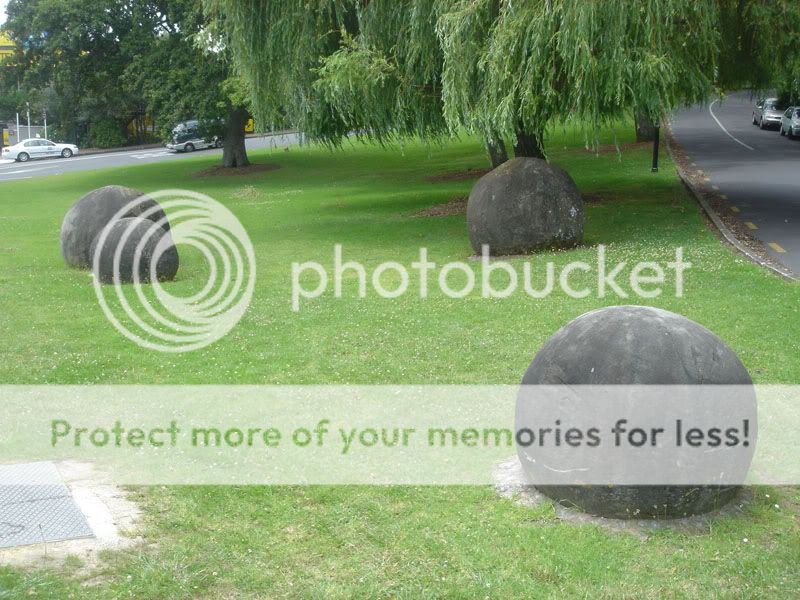Four More Silverdale Boulders --- Exported! (Akl) EarthCache
Four More Silverdale Boulders --- Exported! (Akl)
-
Difficulty:
-

-
Terrain:
-

Size:  (other)
(other)
Please note Use of geocaching.com services is subject to the terms and conditions
in our disclaimer.

The huge spherical boulders were
"concretions", which can only "grow" in a sea sedimentary
environment over millions of years. In some respects they grow like
a pearl will grow in an oyster. A small stone or shell lying in the
sea mud becomes coated with a thin layer of lime and sand, which
then hardens over time. A second layer coats over the first and
so-on until the original object potentially sits at the centre of
many hundreds of coated layers.
As so often happens over millions of years, the sea floor can
then be pushed upwards and become a part of dry land. However, the
boulders will still be found sitting within the same lime and sand
rich material from which they were formed. If they're found to be
sitting amidst clay or other foreign material not conducive to
their formation and growth, then chances are are they've been
moved, by some means, to that new location.
'These boulders, known technically as concretions, grew in porous sand below ground. Lime (CaCO) being carried in solution in ground water and precipitated between the sand grains as cement. They come from rocks about 60 million years old. These particular boulders were obtained by courtesy of the Ministry of Works from the property of Mr. A.H. Grut of Silverdale.'
Site forman, Clarie Neville, was interviewed by newspaper reporters and asked about the boulder find. Mr. Neville stated that he was mystified as to how these boulders got to the top of the hill. Geologists, were going to investigate the matter and write up a report, but the idea died a natural death and no satisfactory explanation for the presence of the boulders at that high inland location was ever forthcoming. Noel Shaw remembers driving his dump truck to the job in the semi-darkness one morning, only to see a low-loader truck, transporting some of the huge boulders, pass him driving south. Apparently a highly placed Auckland City Council official had organised a somewhat clandestine operation to remove up to five of the boulders. Four of them now sit at the Stanley Street entrance to the Domain and another sits beside Auckland University at the top of Wellesley Street. Another one now sits on the corner of Tamariki Street in Orewa township.
To log this EarthCache, you must do the following and email us the results. You can go ahead and log your find, (ie. you don't need to wait for permission) but if we don’t think you have honestly completed the required tasks we will delete your log (after emailing you first of course):
1) Measure the height, width, depth and circumference of two boulders. Email me the answers.
2) Descibe to me the texture of the surface of the boulders, do you see any patterns? If So, tell me. Email me the answers.
3) Take a photo of the 4 boulders.You must include your GPS unit in this photo. .
Please email me this info, please DO NOT post it with your log. Just post your photo.
Additional Hints
(No hints available.)